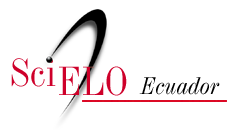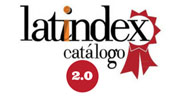Estudio de la variabilidad espacial y temporal de los glaciares y ecosistemas locales del Volcán Antisana
DOI:
https://doi.org/10.29019/enfoqueute.v5n4.44Palabras clave:
Antisana, cambio climático, glaciares, fotografías, sigResumen
(Recibido: 2014/10/31 - Aceptado: 2014/12/15)
El interés científico sobre el cambio climático permitió descubrir evidencias que demuestran una tendencia de calentamiento general provocada por las actividades que desarrolla el ser humano. Hechos como el aumento del nivel del mar, eventos meteorológicos extremos y el retroceso de glaciares, constituyen indicadores de la presencia de modificaciones de los patrones climáticos normales. En el Ecuador, el volcán Antisana es un estrato volcán de importancia estratégica que influye en el clima de la región, en el funcionamiento de los ecosistemas locales y también constituye una reserva de agua para la población del Distrito Metropolitano de Quito (DMQ). Los glaciares de este volcán tropical también sufren los efectos del calentamiento global cuya disminución a lo largo del tiempo es motivo de preocupación y análisis. El presente trabajo de investigación consistió en realizar el estudio espacial y temporal basado en series históricas de fotografías aéreas obtenidas entre los años de 1956 y 2011, a través de las capacidades de geo-procesamiento de los sistemas de información geográfica (SIG). Los resultados obtenidos demuestran una disminución significativa de los glaciares del Volcán Antisana e importantes cambios en las formaciones ecológicas locales circundantes.
Descargas
Publicado
Número
Sección
Licencia
Los autores retienen todos sus derechos (© copyright).
- Los autores retienen sus derechos de marca y patente, y también sobre cualquier proceso o procedimiento descrito en el artículo.
- Los autores retienen el derecho de compartir, copiar, distribuir, ejecutar y comunicar públicamente el artículo publicado en Enfoque UTE (por ejemplo, colocarlo en un repositorio institucional o publicarlo en un libro), siempre que se dé el reconocimiento de su publicación inicial en la revista Enfoque UTE.
- Los autores retienen el derecho a hacer una posterior publicación de su trabajo, de utilizar el artículo o cualquier parte de aquel (por ejemplo: una compilación de sus trabajos, notas para conferencias, tesis, o para un libro), siempre que indiquen la fuente de publicación (autores del trabajo, revista, volumen, número y fecha).
























